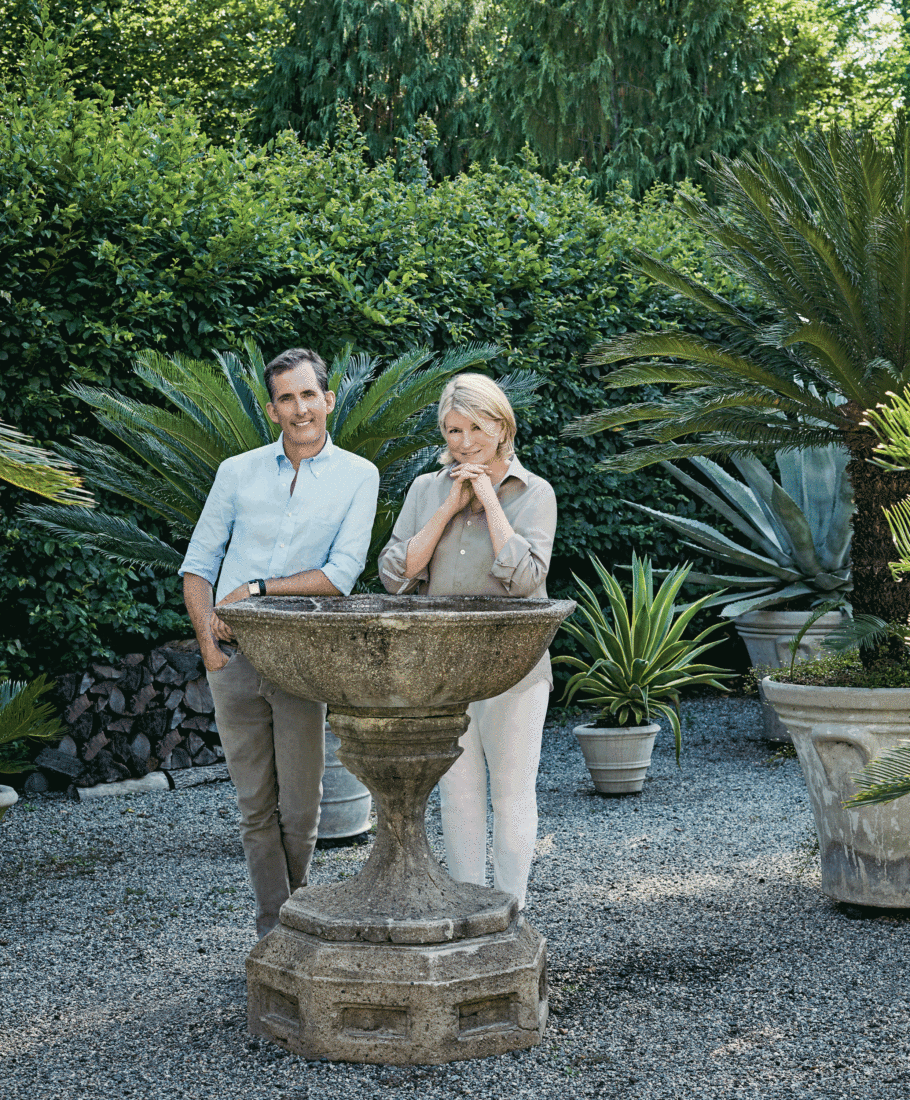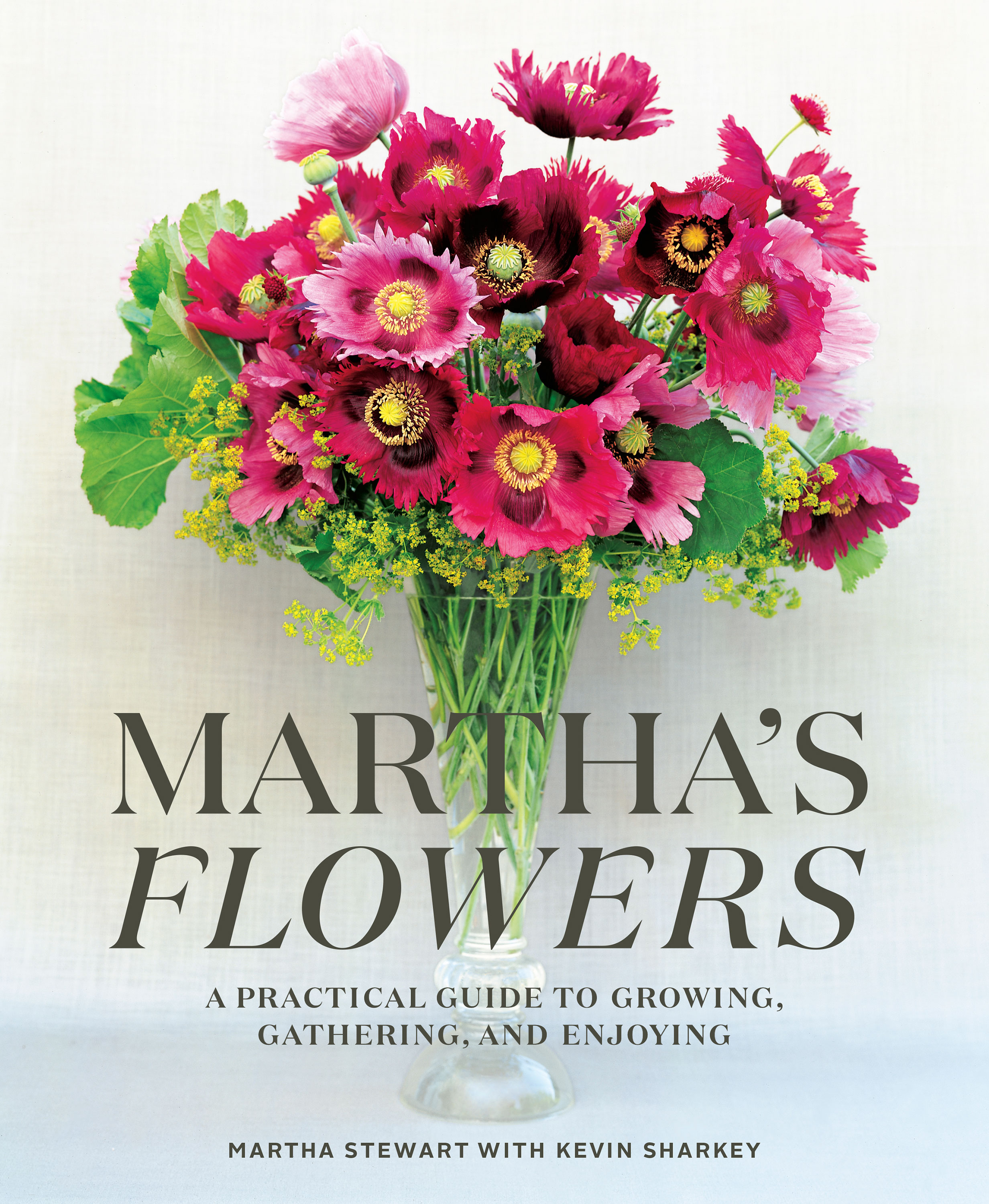“I was brought up with a garden,” Martha Stewart says. “And I always found having a garden important to my state of mind.” The entrepreneur, homemaking guru, and horticultural expert first learned about roses and lilacs from her father and grandmother in New Jersey, and now enjoys spending time in the garden with her own grandchildren.
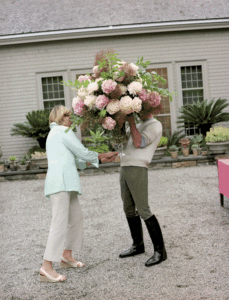
Photo: Anna Williams
Stewart and Sharkey with an arrangement of peonies.
Stewart maintains gardens at all her properties—from her farm in Bedford, New York, to her summer estate in Maine, but is also well versed in many of the plants Southerners love most—hydrangeas, peonies, old garden roses, and magnolias. Her new book, Martha’s Flowers: A Practical Guide to Growing, Gathering, and Enjoying, coauthored with longtime creative partner and floral designer Kevin Sharkey, is her first book devoted exclusively to the art of flower arranging. Here, she and Sharkey share three of their most important tips for creating beautiful blooming bouquets.
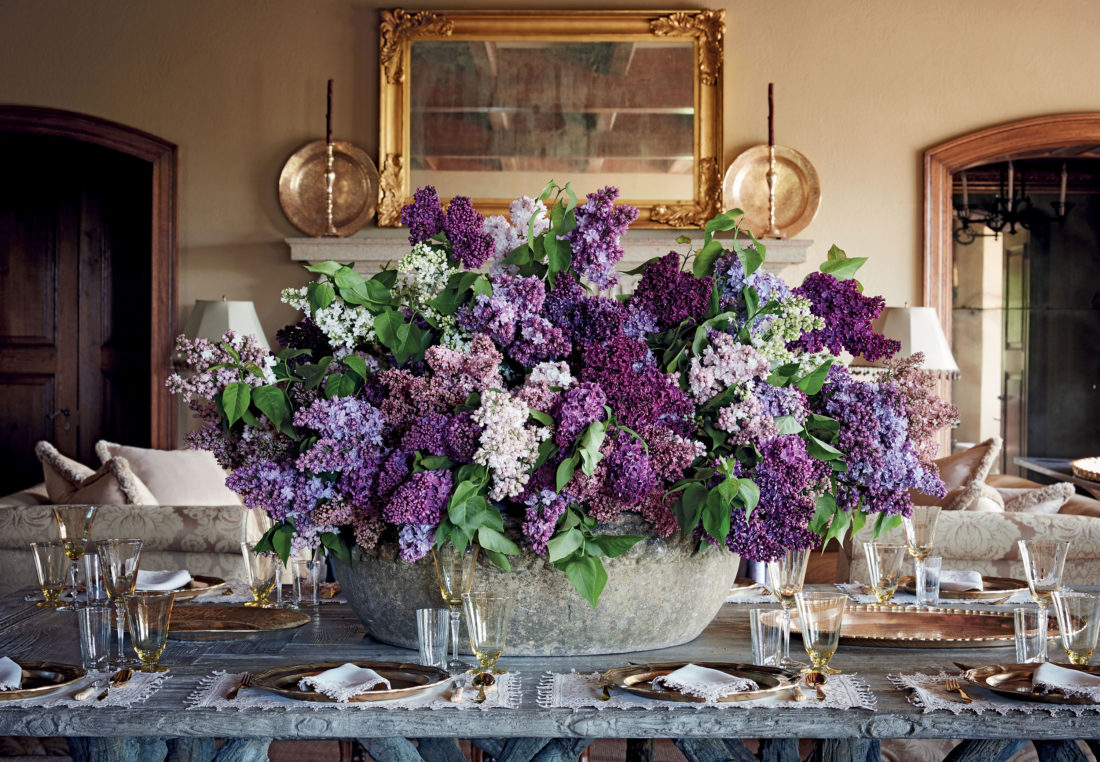
Photo: Douglas Friedman
A sumptuous arrangement of lilacs, including some in full bloom and others in bud form.
1. Learn your favorite flowers—and then go deep on specific varieties.
Martha’s Flowers is, no surprise, as impeccably organized as it is beautifully photographed. Divided into three seasons—Signs of Spring, Summer’s Bounty, and Early Autumn—the book focuses on a thoughtful edit of just sixteen plants that work well in the garden and that can yield stunning arrangements.
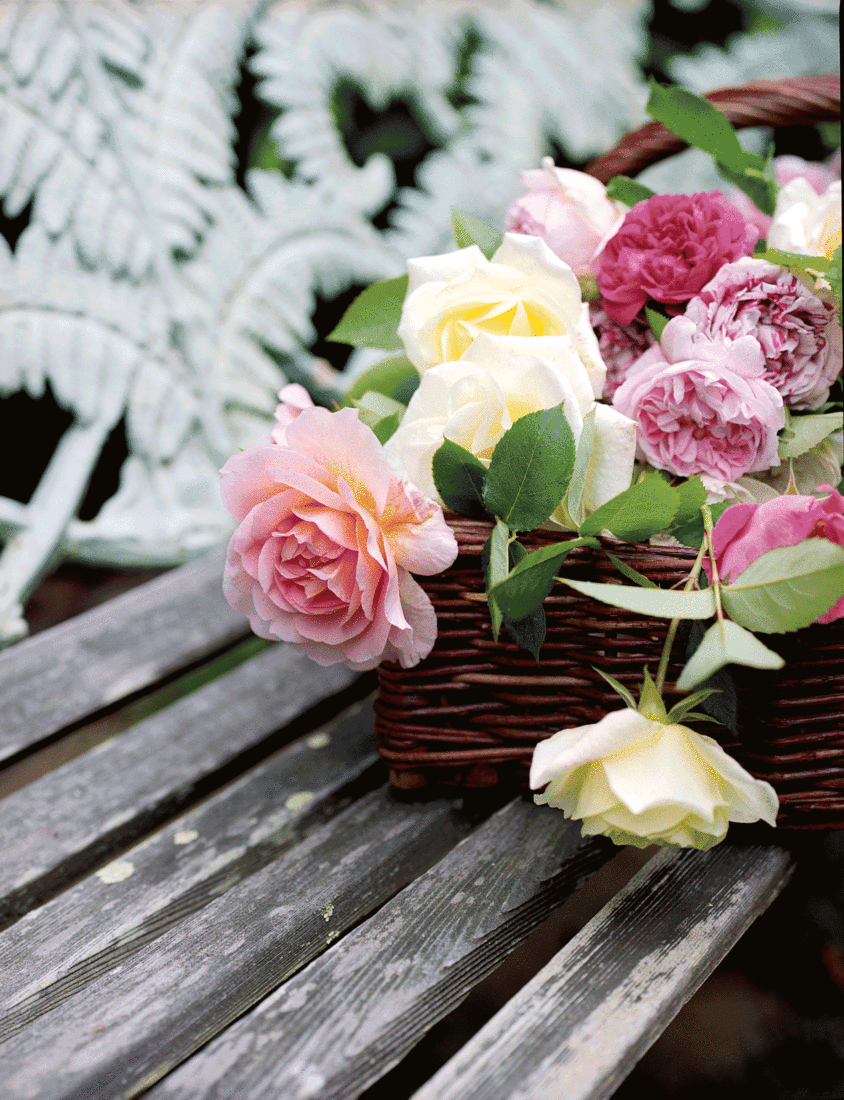
Photo: Frédéric Lagrange
A basket of garden roses.
Spring tulips and daffodils get their due alongside rhododendrons and azaleas, while summer brings roses and hydrangeas, then sunflowers and dahlias in the fall. For each, Stewart shares in-depth information about growing and displaying, and then details all the varieties she enjoys. “I love tree peonies, any tree peonies,” she says. “Japanese and Chinese peonies are important in my garden. One I especially love is a pink hybrid called the Anna Marie.”
There are personal flourishes, too. For example, she tells the story behind her adoration of antique garden roses—her grandmother grew the most coveted blooms in the neighborhood. And Stewart has always had a special love of lilacs, which she now plants in mass quantities so she can harvest flowers by the armful. “I love all the varieties of lilacs for their scent and color,” she says. “When you plant those, they will be in your garden for life. Gather them up in one massive group and you can see all the different cultivars in varying shades.”
“And I love hydrangeas,” she adds. “I start lots of hydrangeas from cuttings and experiment with many different kinds—bigleaf, oakleaf, climbing.”

Photo: Gabriela Herman
Hydrangea prepping and arranging in Stewart’s stable.
2. Consider your vessel.
When you’re ready to bring the blossoms inside, pull out the silver and other favorite heirlooms, Stewart says. “As the grandchild of immigrants who came to America with nothing, I had to create my own heirlooms,” she says. “I remember we would make flower containers out of my grandmother’s Fiestaware coffeepots and teapots.”
Her book explains all the specific tools (i.e. floral tape and chicken wire) that can bring arrangements up to expert level using containers gathered from travels and passed down through the family. “Now, I collect many different kinds of containers,” Stewart says. “I have shelves full of pottery from Morocco, antique finger vases from the Netherlands, glass, cast-iron, and copper containers.”
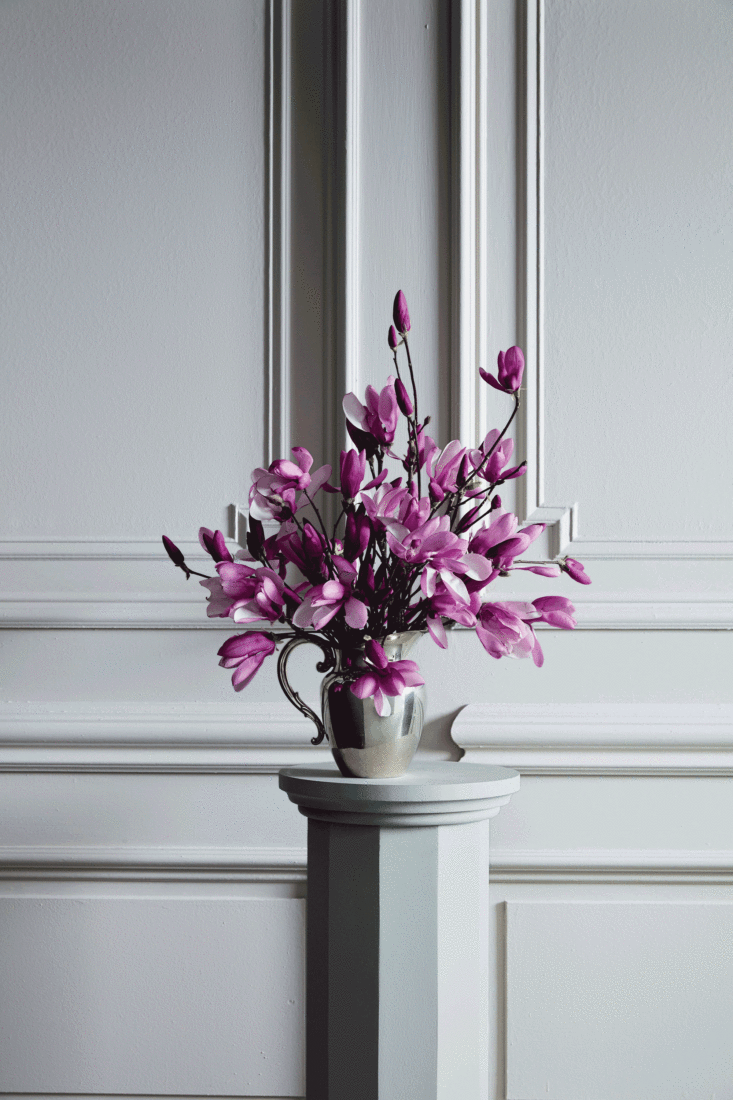
Photo: Kate Mathis
Fragrant magnolia cut at different heights and arranged in a silver pitcher.
One of her favorite displays is elegant in its simplicity—a floating magnolia blossom in a wide, shallow vessel. “I grow one giant macrophylla magnolia that blooms so large, and the scent is heavenly,” she says. “I place one of those in a flat dish of water—any Chinese saucer or silver bowl—and it’s the most spectacular thing you can do.”
3. Greenery matters.
When Sharkey and Stewart were working on the arrangement for the book’s cover, he placed poppies in a vase and Martha added gunnera leaves. “It turned from a beautiful bouquet into a masterpiece because there was scale and color,” Sharkey says. “That’s one of the many things I’ve learned from Martha—never underestimate the power of foliage.”
As a base, Stewart frequently snips giant rhubarb leaves, ferns, hostas, and even asparagus that’s gone to seed. “Greenery,” she says, “has been much maligned as a filler instead of an answer.”


